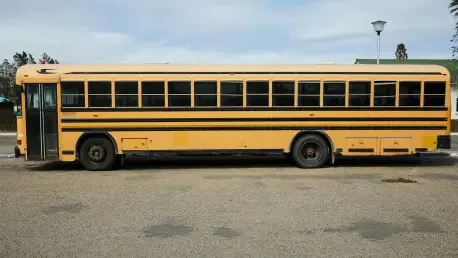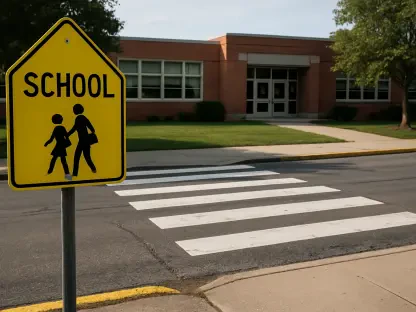In a school system as vast as Prince George’s County, Maryland, where tens of thousands of students rely on bus transportation to get to class each day, the persistent issue of delays has long been a source of frustration for parents and administrators alike. For years, the start of the academic year has been marred by complaints of buses arriving late or not at all, leaving families scrambling for alternatives and students missing valuable learning time. However, recent developments suggest that change may finally be on the horizon. Reports from both parents and school officials indicate that while challenges remain, the severity and frequency of delays are beginning to lessen. This shift offers a glimmer of hope to a community weary of transportation woes, raising questions about what has driven this progress and whether it can be sustained. As the situation evolves, attention turns to the systemic issues at play and the steps being taken to ensure reliable service for all students.
Addressing a Longstanding Driver Shortage
The root of the transportation struggles in Prince George’s County has often been traced back to a chronic shortage of bus drivers, a problem that mirrors national trends but hits particularly hard in a district of this size. With thousands of students relying on daily bus routes, even a small deficit in staffing can ripple outward, causing widespread delays and frustration. In the past, the shortfall has led to buses running significantly behind schedule, especially during morning pickups, which has disrupted not only family routines but also contributed to broader issues like increased truancy rates. Parents have frequently voiced their exasperation over long wait times and lack of communication from the transportation department, painting a picture of a system struggling to meet demand. This persistent gap in personnel has been a key barrier to consistent service, with each academic year starting under the shadow of uncertainty about whether enough drivers will be available to cover all routes.
Recent efforts, however, signal a turning point in tackling this shortage. Interim Superintendent Shawn Joseph has reported that the district began the current year with a deficit of about 130 drivers, a number that, while still significant, represents a reduction compared to previous years. Over the past month, approximately 40 new drivers have been brought on board, with another 200 in the hiring pipeline, though not all are guaranteed to join. This progress stems from intensified recruiting and hiring initiatives, which have prioritized streamlining the onboarding process and offering competitive incentives. While these numbers are encouraging, challenges persist in ensuring that newly hired drivers are fully trained and deployed effectively across the county’s sprawling network of routes. The focus on staffing reflects a broader commitment to stabilizing the system, but it remains clear that sustained efforts will be necessary to close the gap entirely and prevent future disruptions.
Parental Perspectives and Gradual Progress
For many parents in Prince George’s County, the school bus system has long been a source of frustration, with stories of children waiting for hours or missing school altogether due to unreliable service. Take the experience of Michael Geise from Cheverly, who has had to organize carpools as a fallback when buses failed to arrive, often resulting in his son missing entire class periods. Such experiences have been all too common, with social media platforms and transportation department phone lines flooded with complaints at the start of each school year. These delays have not only disrupted daily schedules but also placed additional stress on families already juggling work and other responsibilities. The sentiment among many has been one of exasperation, as the lack of timely transportation has undermined trust in the school system’s ability to meet basic needs.
Yet, there are signs that the tide may be turning, as reflected in more recent feedback from families. Geise himself noted that this week, his son’s morning bus was only about 10 minutes late on two occasions—a stark contrast to earlier delays that stretched far longer. Beyond individual accounts, there has been a noticeable decline in the volume of complaints on social media and calls to the transportation department, suggesting that the public’s experience is slowly improving. This shift in perception aligns with the incremental gains reported by school officials, though it remains uneven across different communities. While some areas report near-normal service, others still grapple with buses that must loop multiple times to cover routes, leading to ongoing delays. This mixed progress highlights the complexity of addressing transportation issues in a district with diverse geographic and logistical challenges, but it also offers cautious optimism that broader improvements are within reach.
Uneven Improvements Across Communities
While the overall trajectory for bus services in Prince George’s County appears positive, the reality on the ground varies significantly depending on location. In some neighborhoods, parents and students have begun to experience more consistent morning pickups, with buses arriving closer to scheduled times than in previous months. Evening routes, in particular, have shown faster improvement, with fewer reports of students stranded or delayed after school. This disparity between morning and evening services can be attributed to scheduling adjustments and the strategic deployment of available drivers during peak times. Interim Superintendent Joseph has acknowledged these gains, emphasizing that most students are now getting to school on time, a critical step toward reducing truancy and ensuring access to education. These incremental successes reflect targeted efforts to prioritize reliability where it matters most, even as the system works toward full stability.
However, not all communities are seeing the same level of progress, and for some, morning delays remain a stubborn barrier. In areas where buses must loop to accommodate multiple routes due to driver shortages, students often face extended wait times that disrupt their ability to start the school day on schedule. This uneven distribution of improvement underscores the logistical challenges of managing transportation across a large and diverse county. Certain neighborhoods, particularly those with less direct access to main routes, continue to bear the brunt of these delays, raising concerns about equity in service delivery. Joseph has been candid about these lingering issues, noting that while the hiring of new drivers is helping, it will take time to ensure that every route operates smoothly. Until then, the disparity in experiences serves as a reminder that systemic solutions must account for the unique needs of each community to achieve comprehensive reliability.
Building Toward a Reliable Future
Looking back, the journey to improve bus services in Prince George’s County revealed a system grappling with deep-rooted staffing challenges that left countless families frustrated. The persistent driver shortage had created a cycle of delays, particularly in the mornings, that disrupted education and strained community trust. Yet, the past months showed tangible steps forward, with the hiring of dozens of new drivers and a reduction in public complaints signaling that efforts to address these issues were beginning to bear fruit. Even as evening routes improved more rapidly, the uneven progress across neighborhoods highlighted the complexity of the task at hand.
Moving forward, the focus must remain on sustaining this momentum through continued recruitment and training of drivers to close the remaining staffing gap. School officials should prioritize transparent communication with families, ensuring that parents are informed about delays and alternative solutions in real time. Additionally, targeted strategies to address looping routes in underserved areas could help balance service disparities. As these efforts unfold, the goal of reliable transportation for every student in Prince George’s County remains within sight, provided that commitment and resources align to bridge the final hurdles.









